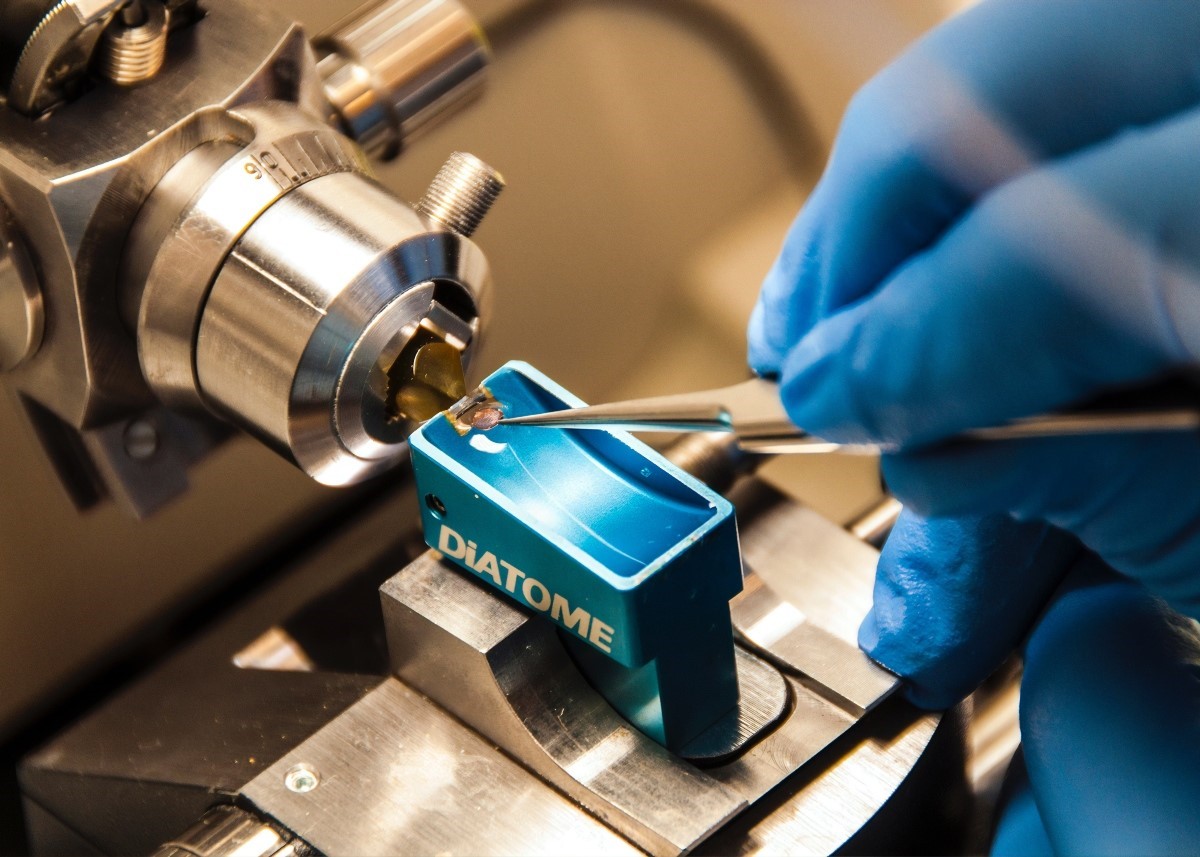We report from the largest breast cancer conference in the world, the San Antonio Breast Cancer Symposium 2021. From cancer blood tests to new drugs, Edd, our Research Communications Officer, shares his highlights.
We report from the largest breast cancer conference in the world, the San Antonio Breast Cancer Symposium 2021. From cancer blood tests to new drugs, Edd, our Research Communications Officer, shares his highlights.

Detecting breast cancer in the blood
Professor Nick Turner, from our research centre at The Institute of Cancer Research, London, talked about how measuring cancer DNA in the blood could be used in high-risk triple negative breast cancer to see whose disease will return so treatment can be adapted accordingly.
Research has shown that measuring cancer DNA in the blood after treatment helps predict relapse for people with triple negative disease. Nick presented results from the cTRAK TN trial, which assessed whether tumour DNA circulating in the blood can help guide further therapy in triple negative breast cancer.
The learnings from this trial are that analysing tumour DNA in the blood should be started as early as possible. However, researchers also believe that in some cases this analysis may not be appropriate for patients who are at high risk of relapse and that treatment to prevent relapse should be started without a delay.
Dr Giampaolo Bianchini, from the San Raffaele Scientific Institute, Italy, presented data from the BioltaLEE trial. It was looking at whether analyzing tumour DNA in the blood could be used to predict how well someone’s secondary breast cancer may respond to the drug ribociclib.
Researchers found that patients with certain detectable changes in cancer DNA overall had a poorer prognosis. However, treatment with ribociclib and letrozole worked in around half of these patients, clearing the cancer cells with these changes. While the other half of patients would benefit from changing their treatment.
More research is needed before blood tests like these become available in clinics. But both of these studies show how looking for signs of breast cancer in the blood could in future shape how we treat both primary and secondary breast cancer.
Finding new ways to treat triple negative breast cancer
There were also talks on early-stage research finding new ways to treat breast cancer. Dr Celina Kleer, from the University of Michigan, USA focused on a protein called EZH2.
Measuring levels of EZH2 in tumours can help predict survival. Celina’s experiments showed that EZH2 increases the rate at which both healthy and cancer cells multiply.
So far, if EZH2 was blocked in experiments in mice, it reduced growth of triple negative breast cancer cells and the spread of the disease around the body.
Celina concluded that EZH2 is a promising target for breast cancer treatment. She hopes, that by further understanding EZH2, this could eventually lead to a new treatment for triple negative breast cancer.
Dr William Tahaney, from Baylor College of Medicine, USA talked about his work on understanding a protein called GPX4. He was looking to see if targeting GPX4 can destroy triple negative breast cancer cells that have changes to a gene called p53.
p53 is a gene that can stop the formation of cancer. But if it doesn’t work properly in some cells, cancer can start developing.
Researchers found a drug called ML-162, which targets GPX4. When they tested this drug in mice, they found that ML-162 decreased the growth of triple negative breast cancer cells.
This suggests that GPX4 could be a promising new target for treating triple negative breast cancer with changes to the p53 gene.
Race and ethnicity in breast cancer
Andre V Barrio, from the Memorial Sloan Kettering Cancer Centre, USA talked about the impact of race and ethnicity on lymphoedema caused by breast cancer.
Lymphoedema commonly occurs two years after surgery to remove lymph nodes in the armpit. It can also occur after radiotherapy. It is a long-term condition that causes swelling in the body and can affect a person’s quality of life.
Studies have found that black women have a higher risk of developing lymphoedema but there is little evidence of how and why this occurs.
Andre and her team wanted to see if they could identify risk factors associated with lymphoedema and assess the impact that race and ethnicity have on its frequency and severity.
They found that lymphoedema severity was no different across race and ethnicity but it occurred more frequently in black women.
Now we need future studies to find the reason why black women are more likely to have lymphoedema so that we can find ways to prevent it.
Beverly Kyalwazi, from the University of Chicago, then presented results from the I-SPY 2 trial, which is investigating how to improve outcomes in people with high-risk breast cancer by testing new drugs before the main treatment.
Women with stage 2 or 3 breast cancer and at high risk of recurrence were included in the study. They were from various racial backgrounds and received various treatments before surgery, including experimental treatment and different types of chemotherapy.
Researchers found that among women who didn’t have their disease completely cleared by initial treatment they received before surgery, the likelihood of recurrence increased. It almost doubled for black or African American women when compared to white women.
Further investigation revealed that black women with oestrogen receptor positive and HER2 negative breast cancer had higher rates of recurrence than white women. Results suggest that this could be linked to the immune system due to high levels of molecules associated with it. Now more research is needed to investigate this.
These were just a few of the many research talks that were presented at this year’s San Antonio Breast Cancer Symposium and it was great to see that progress in breast cancer research hasn’t stopped in 2021.
Funding different types of research projects is a huge part of what we do here at Breast Cancer Now. To find out more about some of our work, visit our 'research' pages.